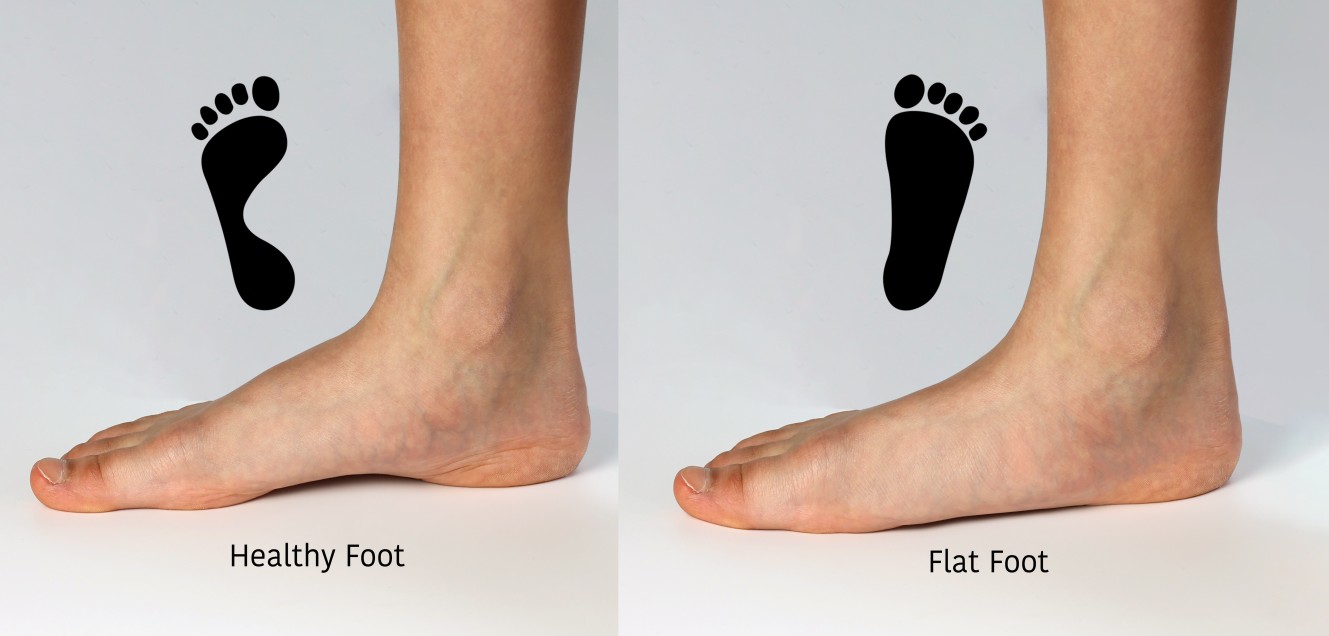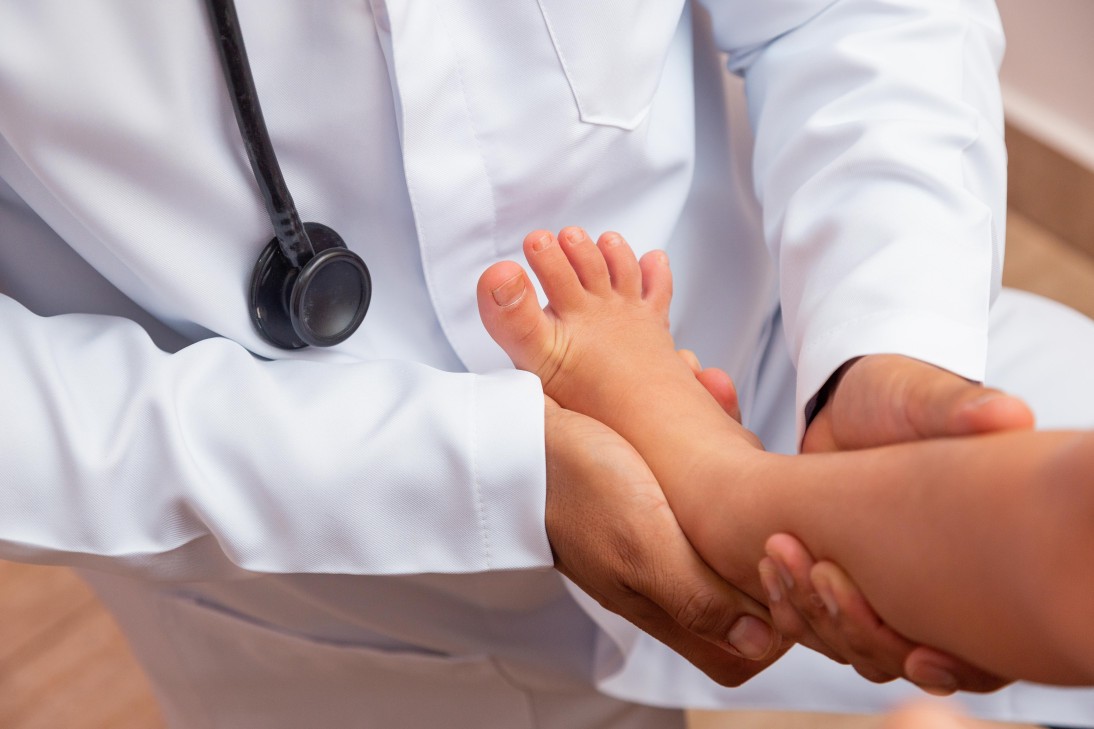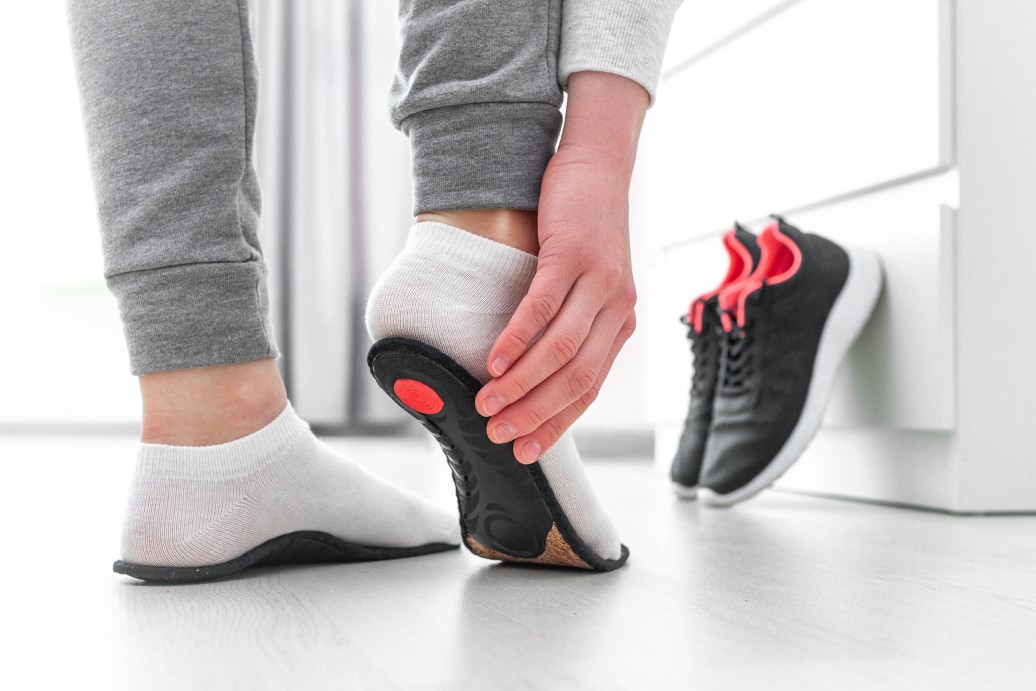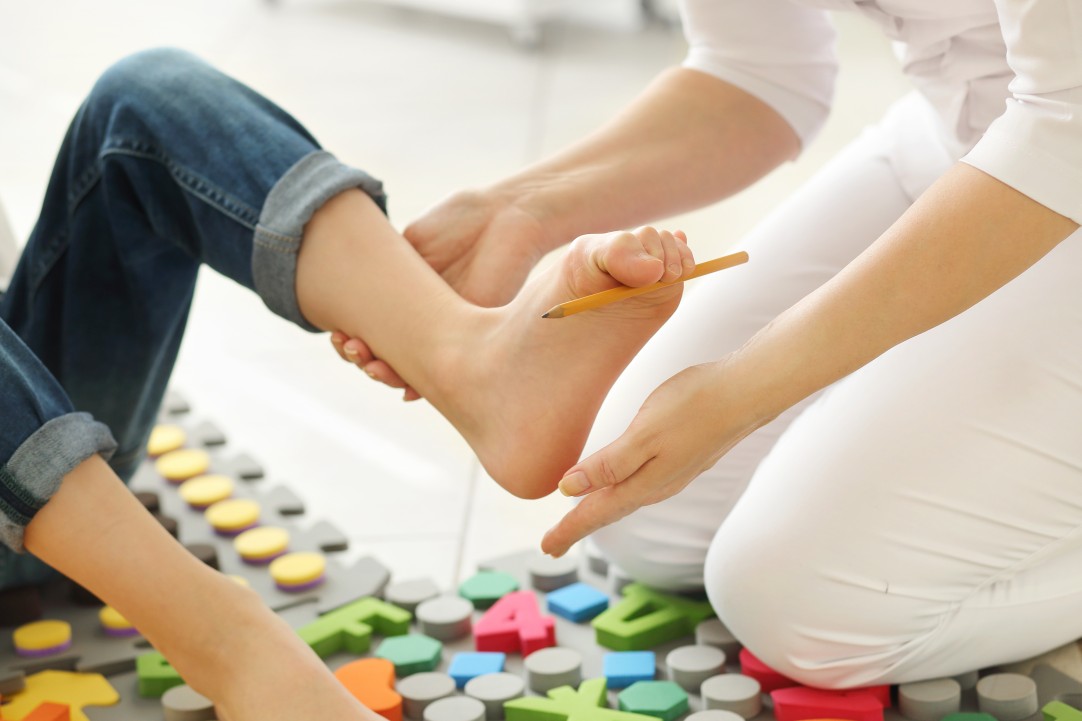Flat Feet Diagnosis? 8 Stretching Exercises to Fix Flat Feet

Do you know that almost 26.62% of the population has flat feet worldwide? Flat feet is a condition where the arches of the feet collapse. This condition can significantly impact our overall foot health, posture, and mobility. Understanding the causes, symptoms, and consequences of flat feet is crucial for anyone looking to maintain an active and pain-free lifestyle.
In this blog, we'll explore the world of flat feet, from its origins to practical flat feet treatment surgery options.
What Are Flat Feet?
Flat feet, or pes planus, are characterised by the absence of foot arches or low height. Multiple factors, like genetics, ageing, and injury,can contribute to the development of this common ailment. People with flat feet might feel pain in the arch and heel and struggle to stand on tiptoes.
The biomechanics of walking and standing are affected by flat feet, impacting the weight distribution across the feet. Over time, this can increase stress on the lower limbs and contribute to issues like ankle instability and misalignment of the knees and hips. Ignoring flat feet may lead to heightened foot and ankle injuries and chronic back pain risks.

What Lifestyle Changes Should You Make for Flat Feet Relief?
One of the initial steps in managing flat feet is making lifestyle adjustments. Here are some pointers:
Choose supportive footwear. Shoes with proper arch support and cushioning can significantly alleviate discomfort.
Incorporate specific foot exercises and stretches into your daily routine to strengthen the arches and improve flexibility.
Weight management is another critical aspect, as excess weight can exacerbate flat feet problems.
Maintain a healthy lifestyle through a balanced diet and regular exercise for overall well-being and foot health.
What Are the Risks of Ignoring Flat Feet?
Ignoring flat feet can cause various issues, impacting not just the feet but also the knees, hips, and even the back. Promptly address flat feet to reduce the risk of foot-ankle injuries, misalignment problems, and chronic back pain. Understanding the long-term implications of untreated flat feet emphasises the need for proactive measures.
How Is Flat Feet Diagnosed?
Diagnosing flat feet is a crucial initial step toward effective flat feet treatment and long-term foot health. If you suspect you have flat feet or are experiencing related symptoms, seeking professional guidance is essential. A healthcare professional, typically a podiatrist or orthopaedic specialist, can thoroughly examine your foot structure and mechanics.

In the test, the health expert might do physical checks—watching how you walk, examining your foot position, and evaluating if you can stand on tiptoes. They might employ imaging studies, such as X-rays, to obtain a detailed look at the bones and joints in your feet. This allows for a more accurate diagnosis and helps rule out other potential foot conditions.
Early diagnosis is critical, as it enables timely intervention and the implementation of appropriate treatment measures. The healthcare professional can determine the severity of the flat feet and recommend a personalised treatment plan.
Orthotic Solutions and Supportive Devices for Flat Feet
Orthotic solutions and supportive devices are pivotal in alleviating the discomfort of flat feet. Orthotic insoles, available over-the-counter and through custom fittings, are designed to provide essential arch support and distribute the weight evenly across the feet. These insoles contribute to improved foot mechanics and help reduce strain on the arches.
Orthopaedic shoes represent another effective option, featuring specialised designs to address the unique needs of individuals with flat feet. These shoes often include built-in arch support, extra cushioning, and a more stable sole, promoting proper alignment and mitigating the impact of flat feet on daily activities.

Custom orthotics, prescribed and crafted based on an individual's foot structure, offer a tailored solution for maximum support and comfort. These devices are particularly beneficial for those with severe or persistent flat feet issues, providing a personalised approach to address specific biomechanical concerns.
Can Physical Therapy and Exercise Help for Flat Feet?
Flat feet or fallen arches can cause various issues, such as pain and discomfort. Physical therapy and specific exercises can be beneficial in managing symptoms and improving the strength and flexibility of the feet.
8 Stretching Exercises for Flat Feet
Here are some really great stretching exercises that you can do at home:

Calf Stretches: Stretch the calf muscles by leaning against a wall with one leg forward and the other extended back.
Heel Raises: Rise onto your toes and lower your heels.
Arch Strengthening: Sit or stand with feet flat and try to lift the arches by curling the toes.
Towel Stretch: Sit on the floor with your legs stretched out. Loop a towel around the ball of one foot and gently pull it towards you to stretch the arch.
Ankle Rolls: Rotate your ankles clockwise and counterclockwise to improve ankle flexibility and strengthen the surrounding muscles.
Intrinsic Foot Muscle Exercises: Pick up small objects like marbles or a towel with your toes to activate the foot's intrinsic muscles.
Orthotics: A physical therapist may recommend orthotic inserts or arch supports to provide additional support and improve foot mechanics.
Balance Exercises: Stand on one foot to improve balance and stability. Progress to performing these exercises on an unstable surface like a balance pad.
Final Words
Reclaiming your stride and banishing flat feet require a multifaceted approach, from understanding the condition to implementing lifestyle changes, utilising orthotic solutions, engaging in physical therapy, and considering surgical options when necessary. By taking proactive steps, flat-foot individuals can journey towards improved foot health, enhanced mobility, and a more fabulous, pain-free life. If you or someone you know is dealing with flat feet, visit your nearest super-specialty hospital today!
FAQs
1. What are the best exercises to strengthen flat feet?
Exercises like arch lifts, toe curls, and calf stretches can help strengthen the foot muscles and improve arch support over time.
2. Can children with flat feet develop normal arches?
Yes, in most cases, children naturally develop arches as they grow. If flat feet persist or cause pain, consult a pediatric specialist.
3. Do flat feet affect athletic performance?
Flat feet don’t always hinder performance, but they can increase the risk of injuries if not properly supported. Custom orthotics or strengthening exercises can help.
4. Are there specific shoes for people with flat feet?
Yes, shoes with good arch support, firm midsoles, and wide bases are ideal for individuals with flat feet. Custom insoles can further enhance comfort.
5. Can flat feet lead to other health issues?
If untreated, flat feet can sometimes contribute to knee, hip, or back pain due to misalignment in posture and gait.
Citations
Evans, A. M., Rome, K., Carroll, M., & Hawke, F. (2022). Foot orthoses for treating paediatric flat feet. Cochrane Library, 2022(1). https://doi.org/10.1002/14651858.cd006311.pub4
Huang, Y., Peng, H., Wang, X., Chen, Z., & Song, C. (2020). The arch support insoles show benefits to people with flatfoot on stance time, cadence, plantar pressure and contact area. PLoS ONE, 15(8), e0237382. https://doi.org/10.1371/journal.pone.0237382
Kim, D., Lewis, C. L., & Gill, S. V. (2021). Effects of obesity and foot arch height on gait mechanics: A cross-sectional study. PLoS ONE, 16(11), e0260398. https://doi.org/10.1371/journal.pone.0260398
Mohaddis, M., Maqsood, S. A., Ago, E., Singh, S., Naim, Z., & Prasad, S. (2023). Enhancing Functional Rehabilitation through orthotic interventions for foot and ankle Conditions: A Narrative review. Cureus. https://doi.org/10.7759/cureus.49103
Pita-Fernandez, S., Gonzalez-Martin, C., Alonso-Tajes, F., Seoane-Pillado, T., Pertega-Diaz, S., Perez-Garcia, S., Seijo-Bestilleiro, R., & Balboa-Barreiro, V. (2017). Flat Foot in a Random Population and its Impact on Quality of Life and Functionality. JOURNAL OF CLINICAL AND DIAGNOSTIC RESEARCH. https://doi.org/10.7860/jcdr/2017/24362.9697
Thong-On, S., Bovonsunthonchai, S., Vachalathiti, R., Intiravoranont, W., Suwannarat, S., & Smith, R. (2019). Effects of strengthening and stretching exercises on the temporospatial GAIT parameters in patients with plantar fasciitis: a randomized controlled trial. Annals of Rehabilitation Medicine, 43(6), 662–676. https://doi.org/10.5535/arm.2019.43.6.662
Xu, L., Gu, H., Zhang, Y., Sun, T., & Yu, J. (2022). Risk Factors of Flatfoot in Children: A Systematic Review and Meta-Analysis. International Journal of Environmental Research and Public Health, 19(14), 8247. https://doi.org/10.3390/ijerph19148247






